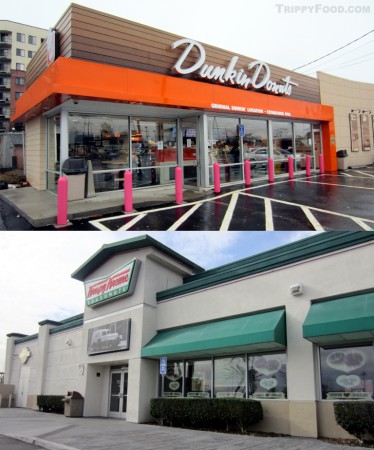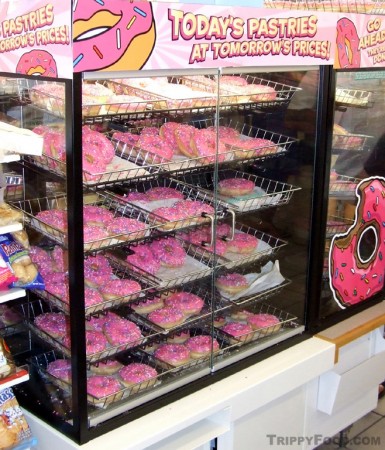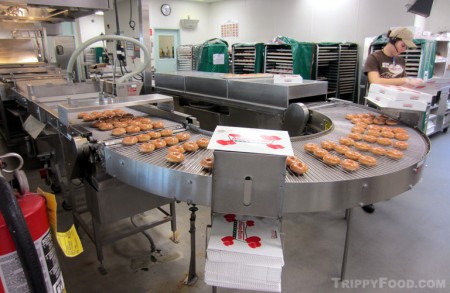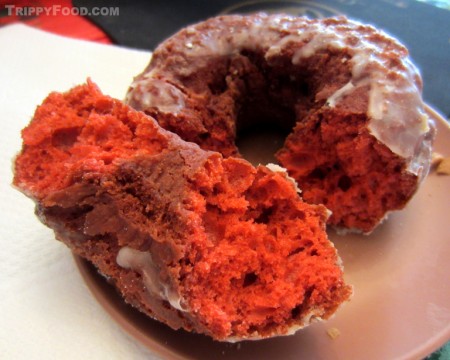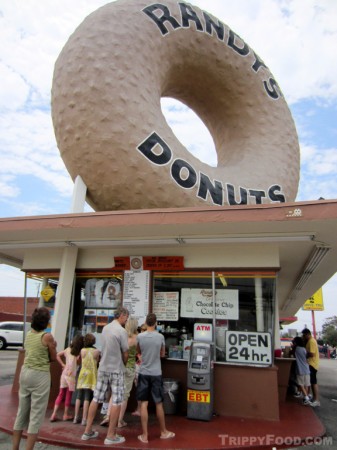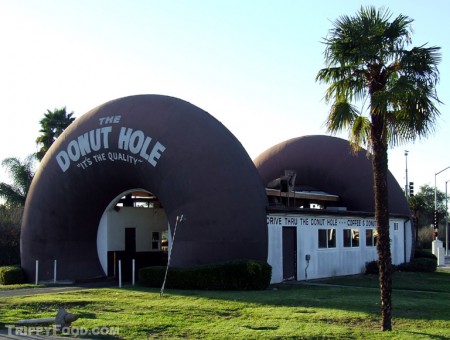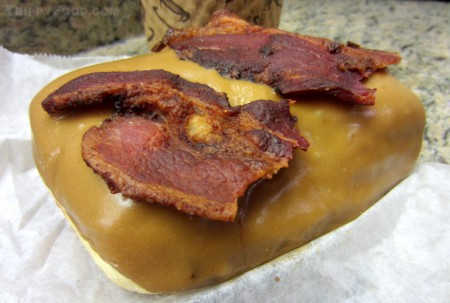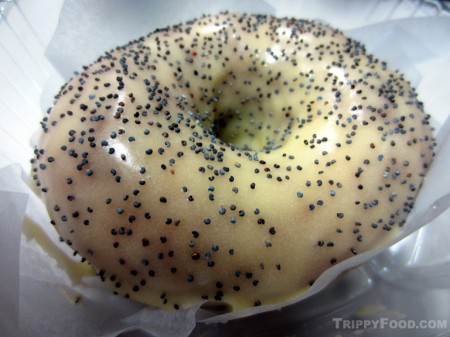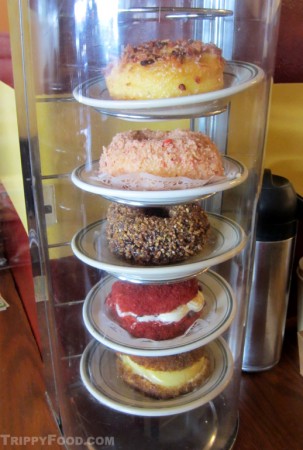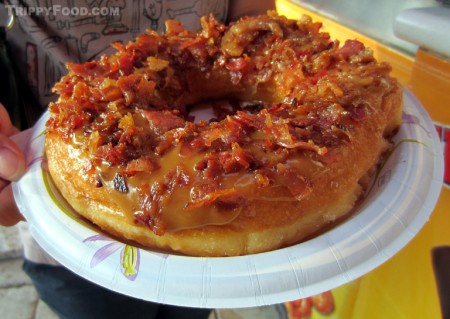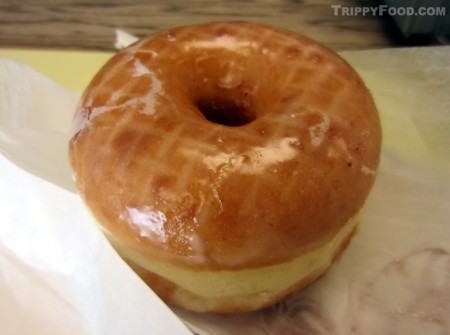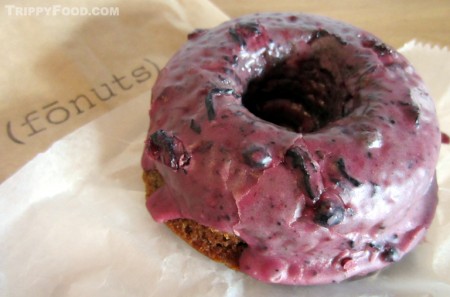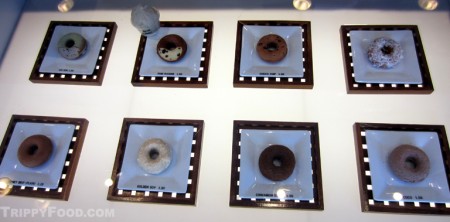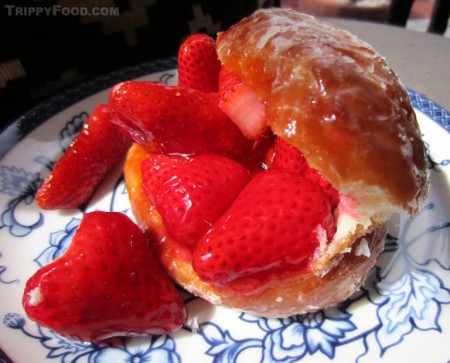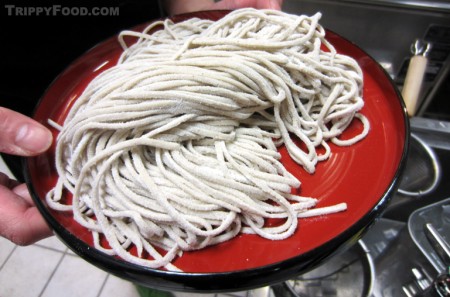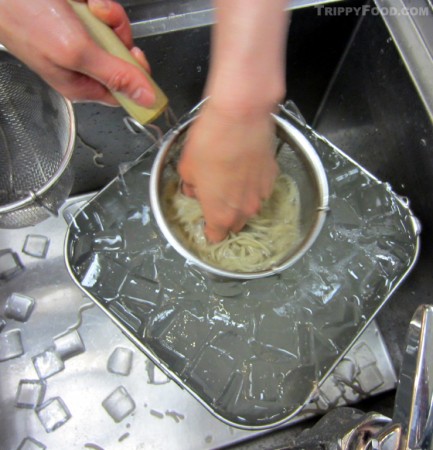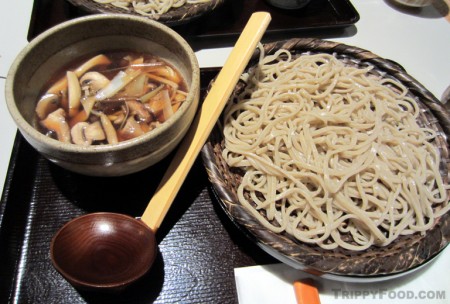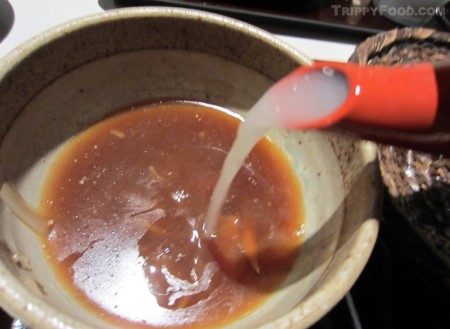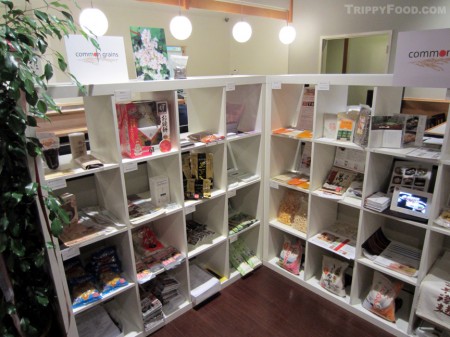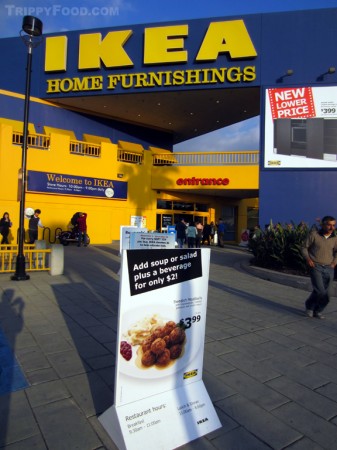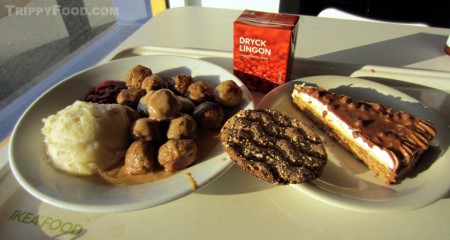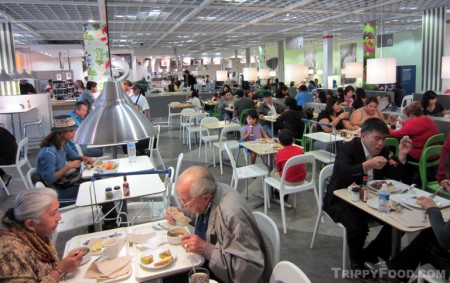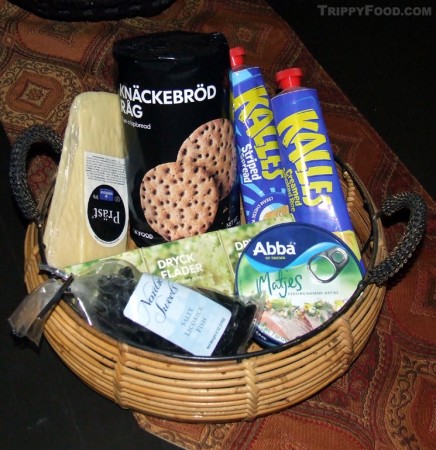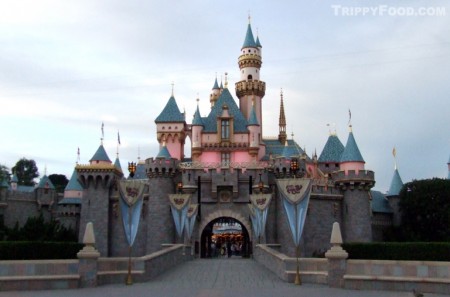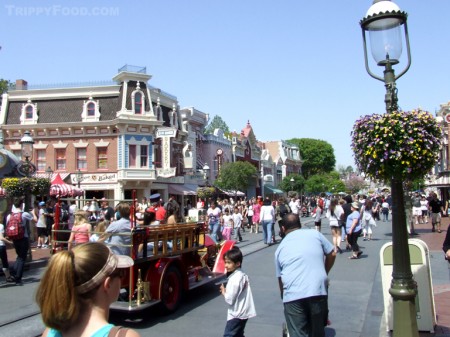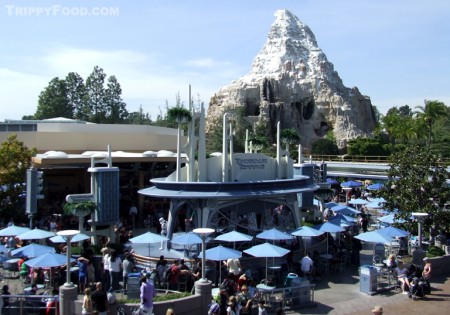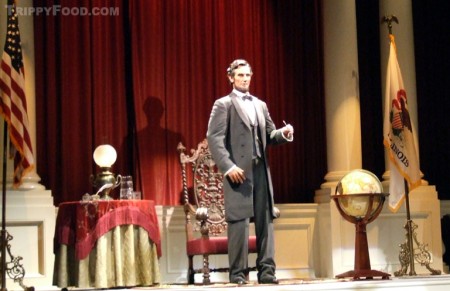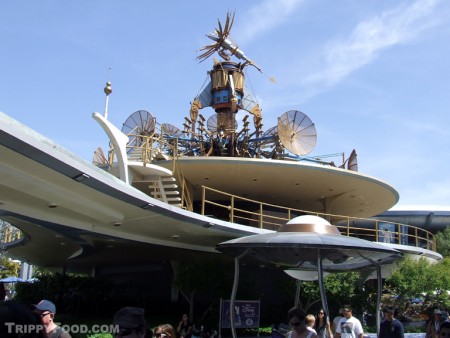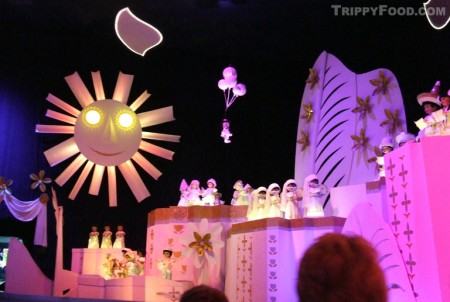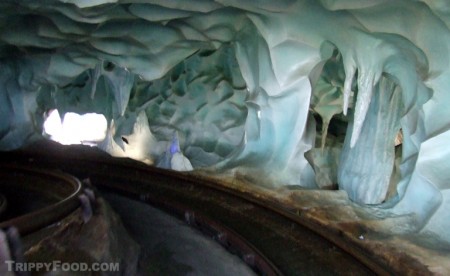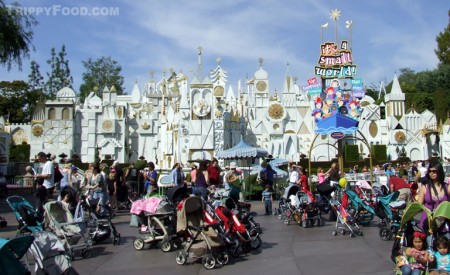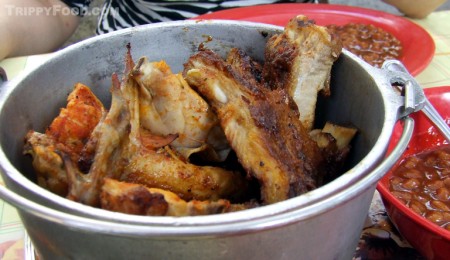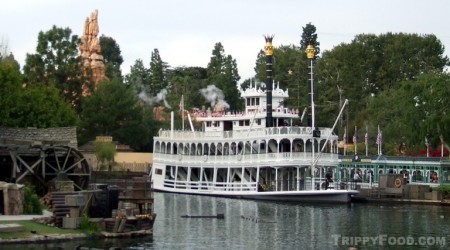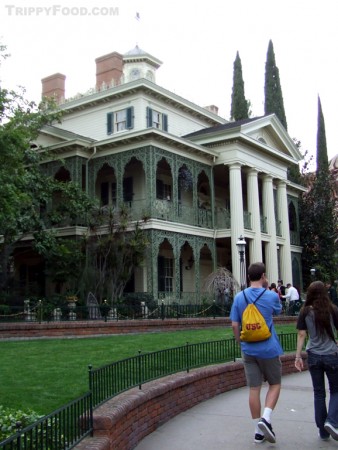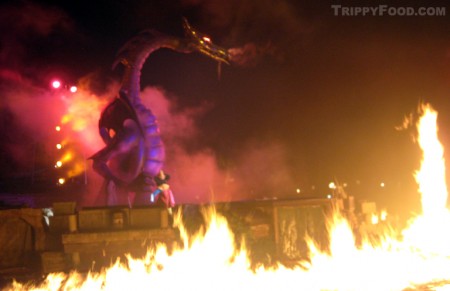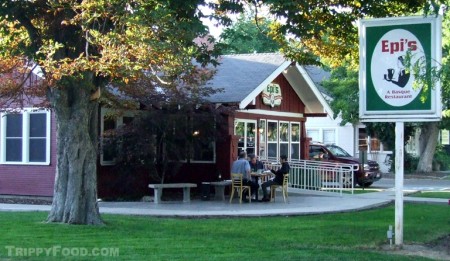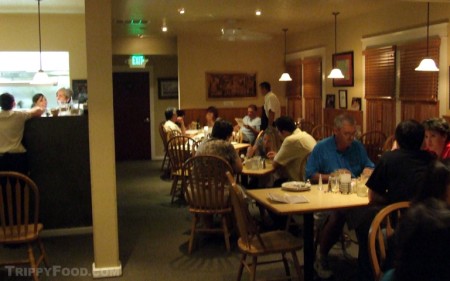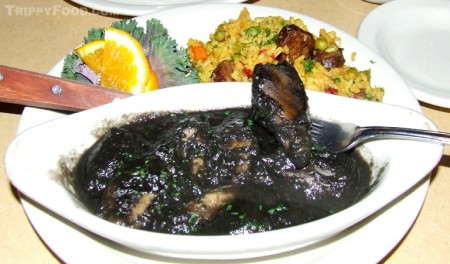The Trippy Food Doughnut Extravaganza
The ubiquitous doughnut is the staple of office meetings across the country, Homer Simpson’s superfood, and makes all the cops in the doughnut shops go, “Way-o, way-o”; it seems as though the lowly ring of fried batter has been around as far back as anyone can remember, although its lineage can only be loosely traced about a century and a half. For the sake of keeping this tome down to about the length of War and Peace, let’s disregard Mr. Donut’s cousins the beignet, zeppole, bagel, fried dough, and yes, even the elusive cruller, and focus on the fried wheel of joy instantly recognizable by billions across America and around the globe. In its formative years, the doughnut got its name from literally being a ball (nut) of fried dough. It wasn’t until the mid-nineteenth century that the inner tube-shaped snack got its current shape; legend has it that teenage ship hand Hanson Gregory punched holes in the dough to allow them to cook all the way through (at that time, to prevent food-borne illness harbored by the uncooked center of the dough ball). By the turn of the last century, the doughnut was a comfort food with widespread appeal; in an effort to afford American soldiers in World War I the comfort of home, Salvation Army volunteers Ensign Margaret Sheldon and Adjutant Helen Purviance devised a plan to make and serve doughnuts to the troops in Europe. In 1938, The Salvation Army instituted National Doughnut Day as a fundraising event to commemorate those who risked life and limb to provide sinkers to the doughboys; the day is still recognized, now held on the first Friday of June.
It’s hard to throw a stale French twist and not hit a doughnut shop from mom-and-pop one-offs through the big dog franchises; of the latter, there appear to be two heavyweights remaining as last men standing: Krispy Kreme and Dunkin’ Donuts. It could be argued that Canada’s Tim Horton’s weighs in as a major player; even though they have cornered the Canadian fast-food market, it’s impossible to find their dough pucks and signature coffee very far south of the border. Krispy Kreme is the senior citizen of the donut realm, having been founded by businessman Vernon Rudolph in Winston-Salem, North Carolina way back in 1937. Legend has it that Krispy Kreme was one of the few products Elvis Presley endorsed by name, proving that the South (and the yeast) would rise again. Krispy Kreme only expanded nationally near the end of the 20th century with a great deal of their popularity based on their “Hot Now” concept. While driving by a Krispy Kreme, if the neon “Hot Now” light is on, that means that doughnuts are coming hot off a conveyor system that would make Henry Ford proud; visitors can watch as their signature raised doughnuts canoe en masse down a river of hot oil, through a shimmering waterfall of liquid sugar glaze, and around the bend on steel rollers where they’re snatched up by employees and served hot to customer. Back when Americans enjoyed a healthy economy workers would offer single hot doughnuts to customers free, but that practice appears to have waned.
Krispy Kreme appeared poised to proliferate the Northeast with their doughnut show, but they did not anticipate the fierce brand loyalty of customers of Quincy, Massachusetts-based Dunkin’ Donuts. Now a household name, Dunkin’ Donuts began its life as a single store called Open Kettle in 1948, expanding with the Dunkin’ Donuts name by founder William Rosenburg in 1950. Although they can now be found worldwide, their stronghold is still the Northeast (specifically the Boston area). There’s a regional anecdote about a person giving directions that include turning right at Dunkin’ Donuts, with the response being, “What Dunkin’ Donuts? There’s one on every corner!” The original Open Kettle site still stands today, and although it has been modernized inside as a fully functional Dunkin’ Donuts, they are the only store to boast a sign on the roof that closely mimics the original logo. When Krispy Kreme had the cojones to open a store in The Pru (Boston’s Prudential Center) in 2004, Bostonians sent them and their lackluster coffee packing; they no longer have a presence in New England. Dunkies (or DD’s as it is also affectionately called) has a similar problem in the west; an attempt to establish several stores in Sacramento, California met with limited interest. Dunkin’ Donuts recently announced that they would soon be opening franchises in California, and most Massachusetts expatriates (me included) are watching the trade papers with bated breath to greet the international franchise. Dunkin’ Donuts stores can be found in more than 30 countries worldwide, and each country puts their local own spin on the flavors of donuts and the way the coffee that is synonymous with the name is served (in Boston, asking for a “regular” gets you a coffee with milk and two sugars).
Tucked deep into Dunkin’ Donuts territory, Kane’s Donuts has been churning out sinkers from a converted house is Saugus, Massachusetts since 1955. For decades, Kane’s was a quiet little secret; to date, they still make fresh donuts during limited hours from their single location but after garnering notice from the Travel Channel they have become a doughnut pilgrimage destination. Although Kane’s doughnuts roll out in a variety of often unusual flavors (think red velvet and Boston cream pie), their claim to fame is actually their coffee roll, a 2-pound behemoth that could feed a small city. The light and airy roll is a BFD (baked fresh daily) confection that has the bread-like texture of panettone; dusted with cinnamon sugar this colossus is best shared with others, but eat it sparingly so that you can save room for their superior doughnuts.
While Kane’s doughnuts are your regulation sized sinkers, you’ll have to travel to the West Coast to find the King Kong of donuts, although sinking your teeth into these would be a bad idea. The Los Angeles area can safely be given the title of Land of The Giants as there are multiple shops that feature a ginormous doughnut as part of their architecture. In the 1950s, a chain of doughnut shops were built under the collective name of Big Donut; each featured a gunite and steel doughnut on the roof that measured a respectable 23 foot diameter. Of the 10 stores under the Big Donut umbrella, only four stores remain – the original store (Kindle’s Donuts in Los Angeles); Bellflower Bagels in Bellflower; Dale’s Donuts in Compton; and, the star of stage and screen opened in 1953, Randy’s Donuts in Inglewood. Randy’s has become the most familiar and iconic of the Big Donut stores, in part due to its location on the crest of a hill overlooking Interstate 405 and being in the direct flight path of airplanes landing at LAX. The location is featured in scores of movies and videos with the giant doughnut serving as a seat for Robert Downey, Jr.’s Tony Stark to polish off a box of doughnuts in Iron Man II and as a landmark in Randy Newman’s “I Love L.A.” music video. Due to its cinematic celebrity, there’s usually a line at Randy’s and it’s not uncommon to find owners and brothers Ron and Larry Weintraub greeting customers and asking where they’re from. An oversized doughnut on the roof alone isn’t enough to get repeat customers, but donuts are handmade throughout the day (they are open 24 hours) and are every bit as good as you would expect from a half-century old doughnut shop.
If you expect to get up-close and personal with your giant doughnut, I recommend a drive out to La Puente, California, home of The Donut Hole. The second in a chain of 5 stores, the La Puente location opened in 1968 as the only store featuring doughnuts in its architecture – each end of the shop is capped off by a partially buried doughnut where you literally drive through the hole. The Donut Hole is the only store remaining of the original 5, and they keep unusual hours (they close for several hours while they replenish their supply). There’s not a wide variety of flavors and the doughnuts trend towards the diminutive, but where else can you go where a doughnut goes through you after you go through a doughnut?
For the ultimate doughnut experience, a visit to Portland, Oregon is in order; the city that vows to “Keep Portland Weird” does exactly that at Voodoo Doughnuts. The name has become synonymous with Portland and visits from the Travel Channel’s Donut Paradise and Anthony Bourdain have only helped catapult Voodoo Doughnuts into the annals of doughnut stardom and legend, no small feat for a quirky little doughnut-only shop that’s been around only since 2003. They have recently remodeled and expanded their original flagstaff store and have opened two other shops, another in Portland and one in Eugene, Oregon. Founders Kenneth “Cat Daddy” Pogson and Tres Shannon traveled to southern California to study the art of doughnut making and turned it on its ear with a shrine to the doughnut that is as irreverent and bizarre as their offerings; take, for example, their mottos (“The magic is in the hole”, and “Where Good Things Come in Pink Boxes”) as well as merchandise that can be purchased online or in-store including pink Voodoo Doughnut underwear. Their doughnuts are every bit as quirky as the decor, from the Voodoo Doll (a voodoo doll-shaped donut filled with raspberry jam and pierced in the heart with a pretzel needle that allows the doughnut to “bleed”) to Captain my Captain (a raised doughnut topped with Captain Crunch; visualize the Cock-N-Balls, a cream-filled chocolate frosted doughnut shaped exactly like you think it is. In addition to the standard fare of raised and cake doughnuts toppings include bubble gum dust; Tang; lemonade and ice tea powder (on the Arnold Palmer); Froot Loops; grape dust; and M & Ms (on the Marshall Matters – yeah, we get it). Although Voodoo Doughnuts did not invent the maple bacon doughnut, they have raised it to new heights with the colossal Maple Bacon Bar. This raised doughnut rectangular monster is topped with a thick, sugary maple glaze and topped with three crunchy strips of bacon. The doughnut is painfully sweet, but after munching on it for a while it takes on the flavor of a pancake breakfast (sans eggs); trust me when I tell you that it will be the only thing you eat for the rest of the afternoon.
Young upstart Blue Star Donuts has opened shop about half a mile from Voodoo Doughnut; they don’t exactly compete with Voodoo’s cheerful insanity, but they do offer brioche-style sinkers made with local, natural and sustainable flour, butter, eggs, milk and cooked in rice oil. The space is completely open, so don’t be so hard on yourself if you accidentally walk behind the counter where the bakers make the doughnuts from scratch; it has the appearance of an old bakery or butcher shop, save for the impossibly high ceilings and solid glass outside walls. Owners Micah and Katie Camden (who also own Portland’s Little Big Burger chain) originally enticed Portlanders with savory menu items with flavors such as fried chicken (which figures prominently in propaganda on the wall high above the back), but to date the staff admits that they’re not quite ready for that yet. Doors open at 7 AM with the doughnut production well under way, and they close when they run out – this was initially around 2 PM, but you still might get some of the dregs past 5 PM. The doughnuts are delicious and boast strong flavors like passion fruit poppy seed, blueberry bourbon and basil, and white truffle chocolate, and while at around two and a half bucks each they ain’t cheap, they’re leagues better that what you’d get at your neighborhood doughnut shop.
A strong contender in the battle for maple bacon doughnut superiority can be found at Los Angeles’ Nickel Diner. The small restaurant has a throwback style to it; not like the sleek, gleaming art deco diners from the 1950s, but more of the feel of a place where a commuter would stop in for a sinker and a cuppa joe or a greasy breakfast – the difference here being Chef Monica May’s exceptional take on basic diner fare. Although they are a full service kitchen, they are best known for their fresh, homemade doughnuts, in particular their red velvet and the aforementioned maple bacon doughnuts. As opposed to Voodoo’s gargantuan Maple Bacon Bar, Nickel Diner’s entry is your regulation-sized raised doughnut with a sticky, almost pure maple syrup glaze that glues the fresh crumbles of bacon to the doughnut like porcine jewels in a dough crown. The flavor of the bacon and maple transform the doughnut itself into a simple media used to hold the bounty from the Great White North, and is nothing short of delicious; the smaller size is a blessing in disguise as you won’t find yourself scampering across the ceiling in a sugar high gone wrong afterwards.
One example of the maple bacon concept gone horribly awry is available at many of the western county fairs in the form of Texas Donuts’ maple bacon doughnut. While still a raised ring, this hefty confection is about the size of a scooter tire, not a doughnut to try to tackle yourself unless you have a death wish or are challenging Adam Richman. If the latter is the case, why not double your pleasure / double your hospital bill with the eponymous Texas Donut, a plain glazed raised doughnut that is undoubtedly off the charts in calories. As long as you’re at the county fair, have someone wheel you over to the ubiquitous Chicken Charlie’s where you can get yourself a variation of the infamous Luther Burger – a cheeseburger sandwiched between two Krispy Kreme doughnuts. At Chicken Charlie’s, the cheeseburger has been replaced with a fried chicken filet and the Krispy Kreme jelly-filled doughnut is halved to serve as a bun. To be fair, the sandwich doesn’t suck; somehow the jelly works with the chicken and the glaze isn’t enough to overpower it, but rest assured you’ll hear your arteries harden with every bite.
At the start of this article I promised not to visit the doughnut’s foreign relatives; however, I would be remiss if I didn’t mention its American cousins, which, while still technically doughnuts have adapted variations in the preparation or ingredients. One of the strangest hybrids is the historic Spudnut. After enjoying potato-based doughnuts in Germany, brothers Al and Bob Pelton spent hours of laborious experimentation with powders and flakes before settling on a milled potato flour that gave them the texture and taste they were looking for. Their first store opened in 1940 and soon they were licensing franchises across the country, providing sacks of their patented potato flour. The corporation was sold several times before the parent company folded in the early 1980s. To date, there are 35 Spudnut stores remaining open, and although they have diversified and provide breakfast and sandwiches, the draw is still their potato-based raised donuts (be forewarned – the stores also hawk cake donuts, but they don’t contain potato flour). On first bite, the donuts are unremarkable (they have the taste and consistency of a decent raised doughnut), but there’s a faint hint of potato that stays on your tongue similar to eating potato flakes right out of the box.
Two single-store Los Angeles area doughnut shops deservedly earn the title of doughnut bakery: (fōnuts) and Beach City Baked Donuts. (fōnuts) was opened in the summer of 2011 by Nancy Truman and helmed by pastry chef Waylynn Lucas. The concept is simple – the doughnuts are never fried; they are either baked (as most of the cake donuts are) or in the case of the raised doughnuts, baked and steamed. Every one of their doughnuts use natural ingredients, and Lucas has created many to be gluten-free or vegan. While it could be argued that they’re lower in calories since they’re not immersed in fat, you could get sidetracked in to thinking this is dietary health food – keep in mind that their maple bacon doughnut is made with real pig and maple syrup. The doughnuts are made with the highest quality ingredients, and they aren’t just good – they’re astounding. (fōnuts) was hyped-up after opening, and I anticipated the disappointment I’d encountered many times before at restaurants armed with local celebrity chefs until I tried their blueberry Earl Grey doughnut. This moist, crumbly ring of cake was sweet without being overpowering; the thin, hardened glaze was naturally purple from the inclusion of blueberries and each bite was chock full of still-fresh crushed blueberries that put the finest blueberry muffin to shame. It was without a doubt the best doughnut (OK, fauxnut) I’d ever eaten, hands-down. At close to four bucks a doughnut, you won’t be bringing a box of these to your church meeting but one of these and a good cup of coffee (which is also available) have the makings of an exemplary laid-back morning.
If doughnuts with foreign intrigue are your bag than the baked doughnuts at Beach City Baked Donuts in Redondo Beach is a healthy alternative with Asian flair. The staff is quick to point out that their oil-free confections are dripping with Japanese flair; display case has a series of square plates geometrically arranged on a bottom-lit Lucite panel with each containing a single labeled doughnut. The doughnuts with fruit mixed in have razor-fine sections cut out to reveal their interiors, their flavors labeled and displayed like art in a museum – rum raisin, choco chip, cinnamon, golden soy, “coco”, coconut, honey drip, and uji-kin. I chose the honey drip (their version of the plain cake doughnut) and the uji-kin (filled with mung bean and dusted with green tea powder); the doughnuts are individually sealed in clear plastic bags to go. The woman at the counter asked if I would be eating the uni-kin there or taking it to go, and when I asked for it to travel she suggested waiting until I was ready to eat it, heating the doughnut for 5 to 10 seconds in the microwave and then applying packet of green powder. I felt like I had just scored some exotic smack and with my legendary dexterity, I managed to get the powder all over my desk. The doughnuts were a little on the dry side, but they were sweet and had a nice, fluffy cake consistency. On a side note, I was able to snag a box of Pocky to satisfy my desire to try the chocolate-covered, matchstick-thin breadsticks for the first time.
One purveyor has built a reputation not so much for the doughnuts themselves but for what he stuffs inside them. Jim Nakano, The Donut Man of Glendora, California has been packing his potato flour raised-and-glazed with a generous fistful of strawberries since 1974. Since only fresh strawberries are used, these treats are only available when strawberries are in season; in order to provide fruit-filled doughnuts for a longer period of time, The Donut Man also makes a peach doughnut when that fruit is available. The filling is so fresh that the berries are still firm with some teeth to them; the occasional slight bitterness of one straggler that isn’t quite ripe is enough of an indication that they haven’t been allowed to sit. Their green heads are lopped off, after which they are coated with a thick, red, sugary glaze – these are force-fed to the doughnut which has been sliced lengthwise about three-quarters of the way across. I discovered the hard way that these obese confections defy being eaten by hand; the supplied plastic fork is a necessity, and if you decide to indulge, it might help to ask for a plastic knife as well. The doughnut itself isn’t overly sweet and the thick, spongy flesh wraps lovingly around the berries to make each bite reminiscent of strawberry shortcake.
I realize I’ve neglected the legendary yellow raised puffs from Texas’ Round Rock Donuts, the now-defunct Swirls Bakery in Omaha, Nebraska (regarded as the originator of the maple bacon doughnut) and many more quirky or outstanding doughnut venues, but there simply isn’t enough bandwidth to cover all the sweet, sticky dough wheels worthy of mention, and all this doughnut talk is giving me a craving for a Bismarck – ich möchte ein Berliner!
Dunkin’ Donuts
543 Southern Artery
Quincy, MA 02169
GPS Coordinates: 42°15’10.45″N 70°59’34.29″W
Kane’s Donuts
120 Lincoln Avenue
Saugus, MA 01906
GPS Coordinates: 42°27’11.06″N 70°59’29.42″W
The Donut Hole
15300 Amar Road
La Puente, CA 91744
GPS Coordinates: 34° 2’13.37″N 117°57’5.89″W
Randy’s Donuts
805 West Manchester Boulevard
Inglewood, CA 90301
GPS Coordinates: 33°57’42.27″N 118°22’13.40″W
Nickel Diner
524 South Main Street
Los Angeles, CA 90013
GPS Coordinates: 34° 2’45.54″N 118°14’56.25″W
(fōnuts)
8104 West 3rd Street
Los Angeles, CA 90048
GPS Coordinates: 34° 4’19.18″N 118°21’58.15″W
Beach City Baked Donuts
501 N Pacific Coast Highway
Redondo Beach, CA 90277
GPS Coordinates: 33°50’58.03″N 118°23’19.69″W
Voodoo Doughnuts
22 Southwest 3rd Avenue
Portland, OR 97204
GPS Coordinates: 45°31’21.23″N 122°40’23.31″W
Blue Star Donuts
1237 SW Washington St
Portland, OR 97205
GPS Coordinates: 45°31’19.83″N 122°41’3.40″W
The Donut Man
915 E. Route 66
Glendora, CA 91740
GPS Coordinates: 34° 7’44.05″N 117°50’59.13″W

